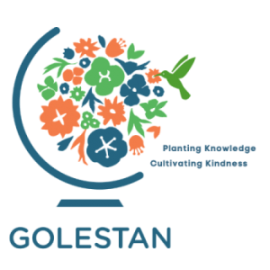Golestan Education
El Cerrito, California
Golestan Education is an independent school that serves 100 children in PreK through 3rd grade. After a semester of distance learning in Spring 2020, they re-opened their preschool and summer camps on June 22, 2020. The school applied for (and received) a waiver to be exempt from the state of California's restriction for onsite learning in schools. Their careful planning process for COVID-19 includes:
Sourcing supplies and PPE (see supply list).
Forming a task force with staff from each of the school’s departments, parents, and a coronavirus clinical expert.
Surveying parents and staff.
Writing the school’s COVID-19 safety protocol.
School-wide meetings with parents and staff.
Setting up outdoor spaces with the help of community volunteers.
Coordinating regularly scheduled (small group) “pod” meetings for parents and staff to communicate openly with one another.
See also this case study on how the school specifically addressed snacks and meals on campus — outdoors!
Interview with School Staff
We asked Golestan Education’s Executive Director, Yalda Modabber, a few questions about reopening the school:
Q: How did you decide to reopen in June 2020?
YM: Our parents were very interested in reopening the school. They helped us to see that the children were suffering social and emotional losses from missing their friends and their routines when they were at home. And, most of the burden for their daily care was falling on women in their households. The children’s mothers were risking losing their jobs as they tried to juggle their children’s needs and their own work, and they were carrying a huge load. Now that we have had the experience of being open in the summer, we have confidence that we can reopen in the fall, too, with a safe environment for our teachers and opportunities for the kids to be together to learn and play.
Q: What did you learn in the first few weeks of being open? Do you have any advice to give to other schools?
YM: Every second you pour into planning is worth its weight in gold. Think through every detail. Walk through all the scenarios step-by-step with each team, then together with all of the staff to anticipate as many details as possible, and create a smooth reentry. With the exception of a few minor details around drop-off times and locations, it could not have been smoother for us. We can't believe it. Another piece of advice is to invest in additional staff to help with the increased level of cleaning and sanitizing, so as not to overburden teachers. And finally, control cross-pod contamination to the best of your ability. With our current protocol, it's virtually impossible to have cross-pod contamination and I can't express enough what a huge relief it is not to have to worry about that.
“We have confidence that we can [be open] with a safe environment for our teachers and opportunities for the kids to be together to learn and play.”
School information
Independent
PreK — 3rd; up to middle school in after-school program; up to 12th grade in summer camp
~ 40 staff members and treachers
100 students, mostly non-European Caucasian
1.5 acres of schoolgrounds
Outdoor Learning Overview
Before COVID
Number of outdoor classroom spaces: 6
100% of the students were outside for over 20% of the day.
During COVID
Number of outdoor classroom spaces ADDED: 2
2020 — 2021 school year, starting in June 2020: 100% of the students were outside for 100% of the day.
2021 school year: one hundred percent of the students were outside for over 60% of the day.
Fall 2021 Update — Where We Are Now
In October 2021, we spoke again with Golestan Education’s Executive Director, Yalda Modabber, about how the school’s pandemic response and outdoor learning strategies fared over the course of the year.
GSA: After over a year, is there any advice you can offer to schools that have not done anything outside at all yet? If they really want to go outside, but don't know where to start, what encouragement can you share with them?
YM: Okay. So advice would be first and foremost to prioritize ventilation 100 percent. That's number one. People talk about green HVAC systems that are like filters. Those filters that you bring into a classroom are not equipped to clean an entire class to clear all the virus out of the classroom—however, many people think this! What you really need is air circulating.
That's why I would say the first choice would be to be outside whenever possible. But if you have a way to do a hybrid where you're inside and outside or your, you have to be inside then make sure you get those fans going, make sure you duplicate the experience of being outside as much as possible. That includes making sure all the windows are open, that are operable that are safe to open, and that you have an HVAC system turned on just to blow air and to circulate it. [And keep the room] open on two separate sides!
But if you are able to take the kids outside, don't be afraid of it!
People were so worried about the cold and the elements—and the truth is that kids are resilient.
The bigger challenge is supporting teachers so that they're comfortable. That is the biggest challenge. Give them the equipment that they need to be able to teach comfortably.
The other thing is, there's a shift in how people teach when they're outside. And that's the silver lining for me because it’s one of the things we've been working really hard on is changing the way that people work with kids. It's really hard to take a traditional classroom teaching model and apply it outside—which is why a lot of people resist it. It's much more conducive to do project-based learning and individualized learning. So if you're following a traditional classroom model, and you don't have your projector, you don't have all these things that you're dependent on for teaching in a conventional classroom. So that shift, that's a big one.
But people can reach out to me—I'm happy to work with them to think through how to adapt and not to be afraid of it because the outcome is so rich and fulfilling. You can't get to that without effort, right, so we're always afraid of effort, but the greatest rewards come with the greatest effort.
Yalda Modabber, Executive Director of Golestan Education in El Cerrito, California, shares her school's work to create outdoor classrooms to use during the COVID-19 pandemic. July 2020. Click the image above to watch the video.
“Do not to be afraid of [outdoor learning] because the outcome is so rich and fulfilling ... We’re always afraid of effort, but the greatest rewards come with the greatest effort.”
Outdoor Learning at Golestan
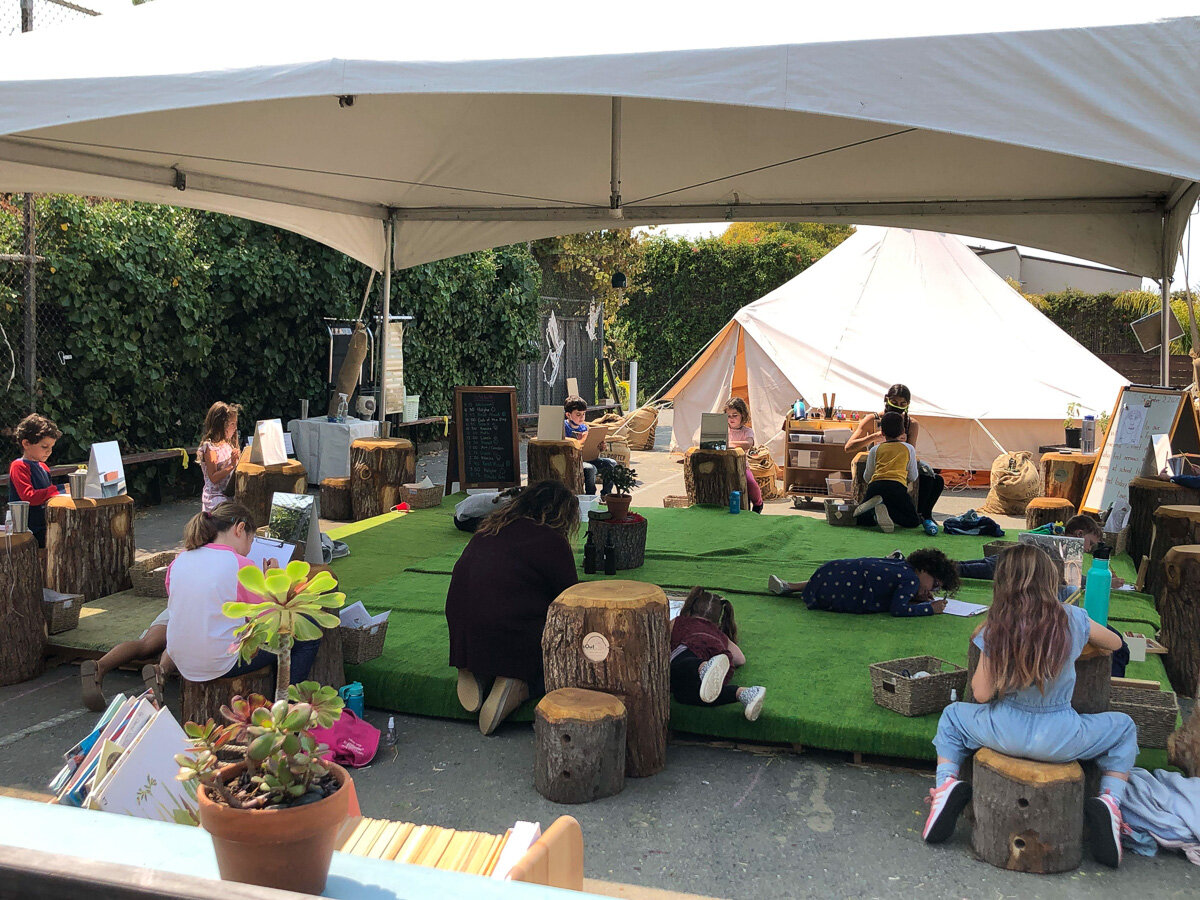
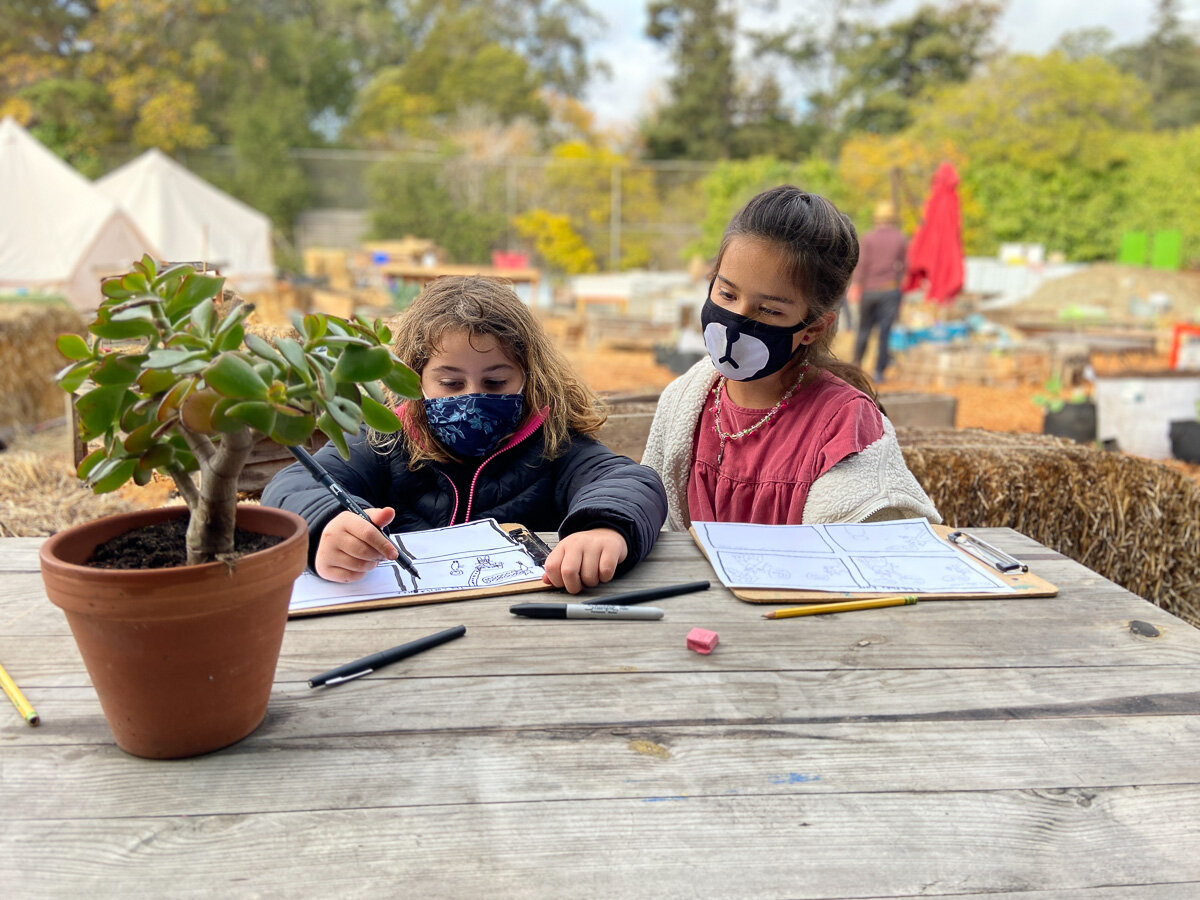
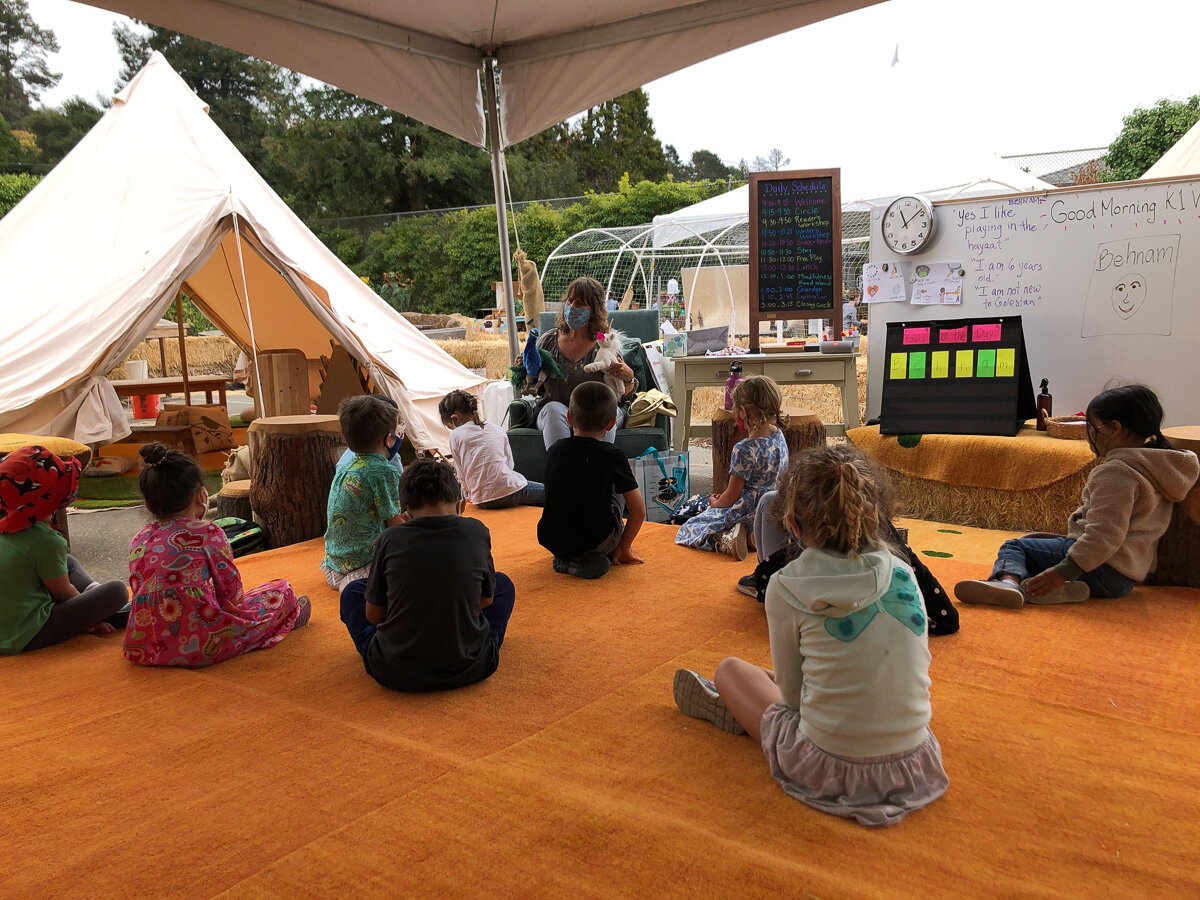
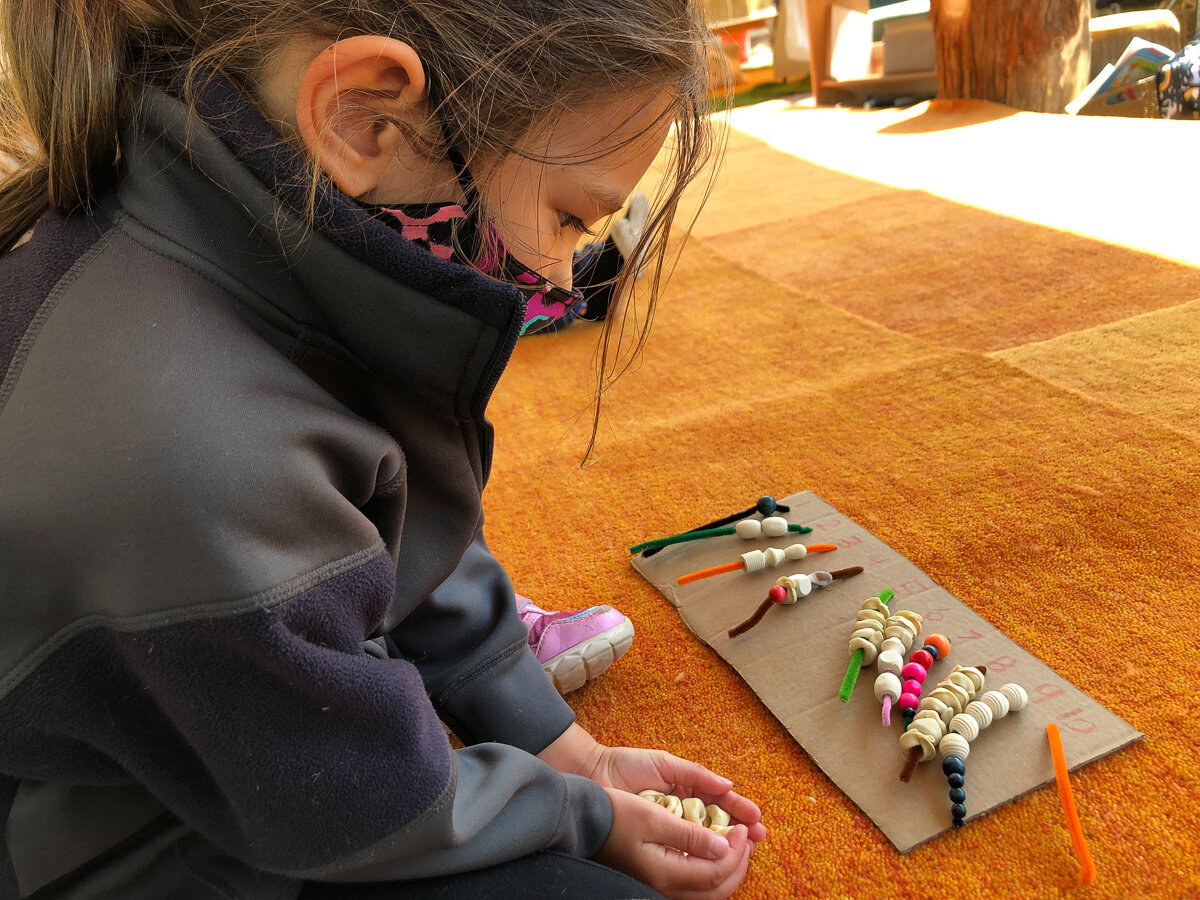
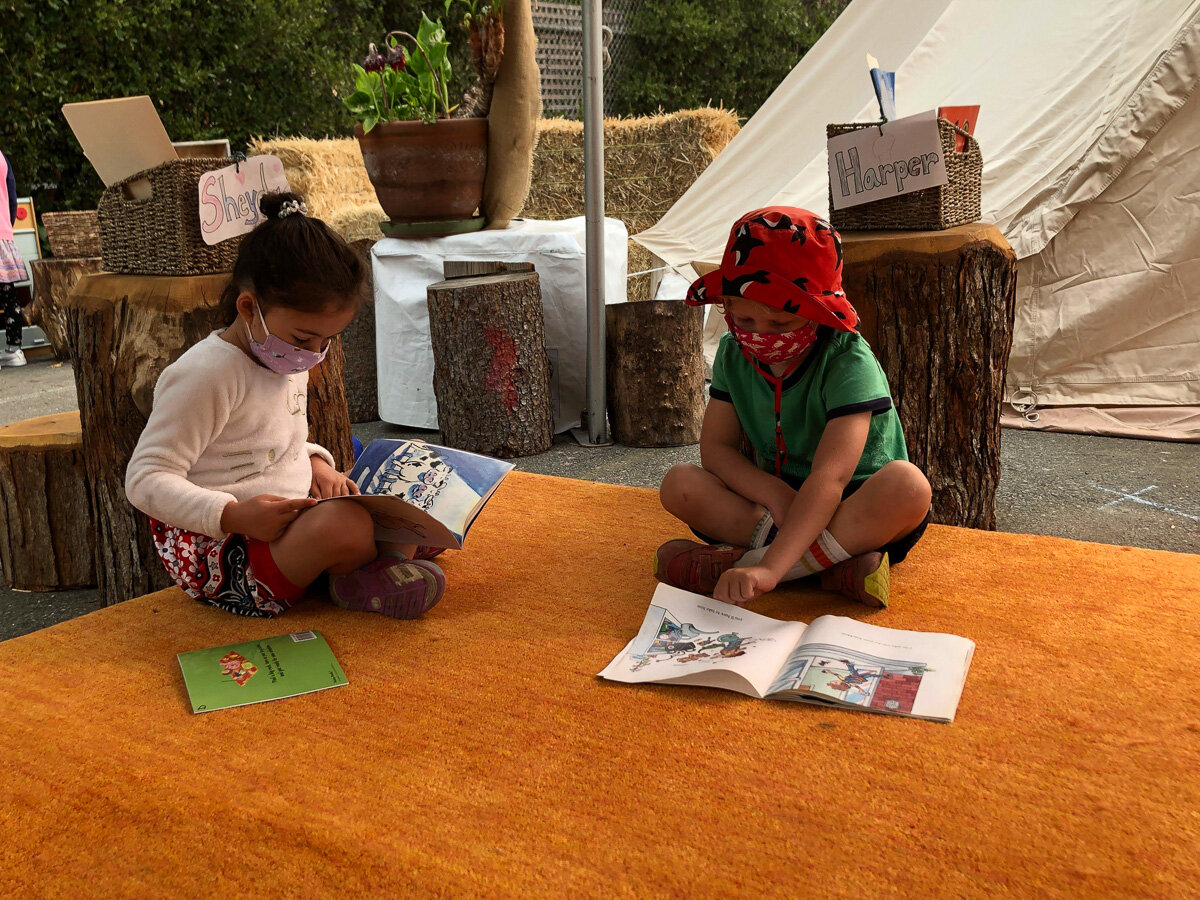
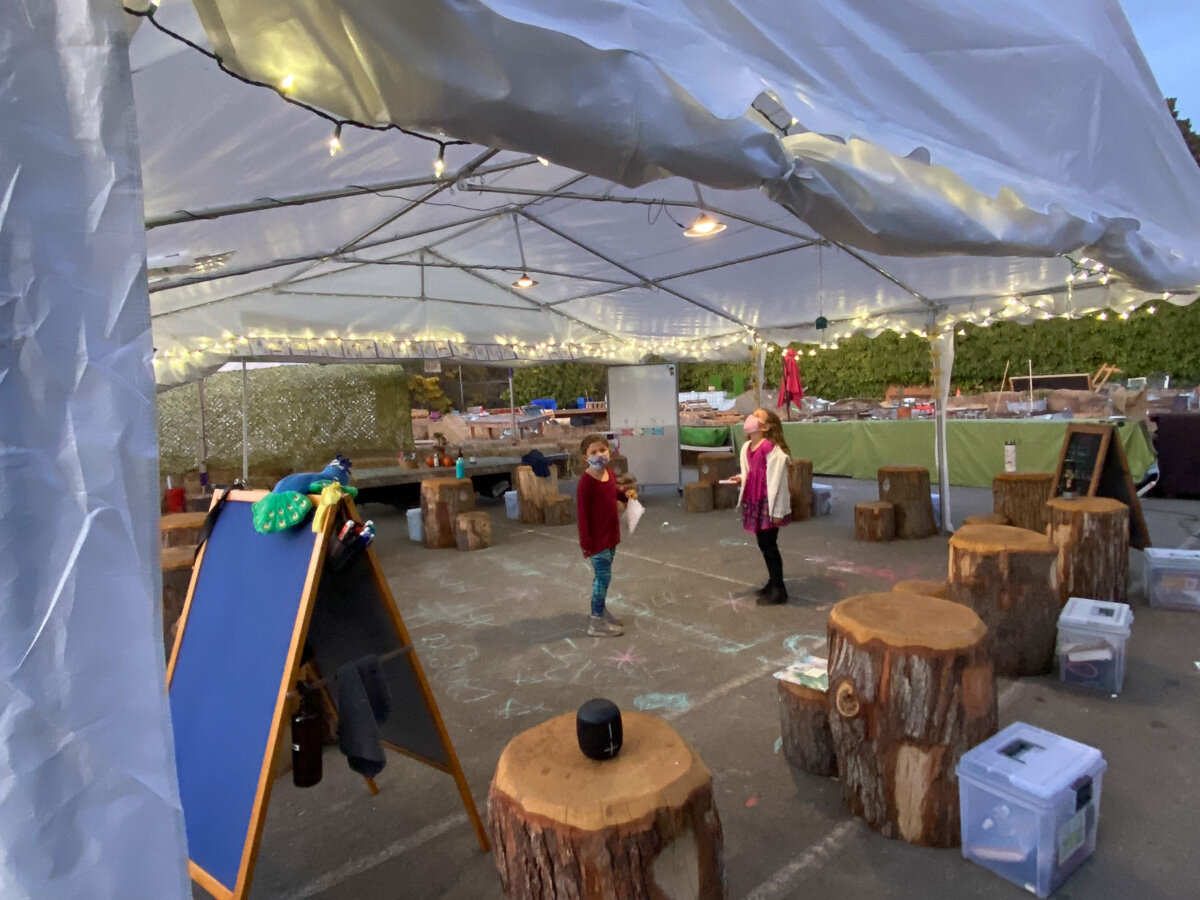
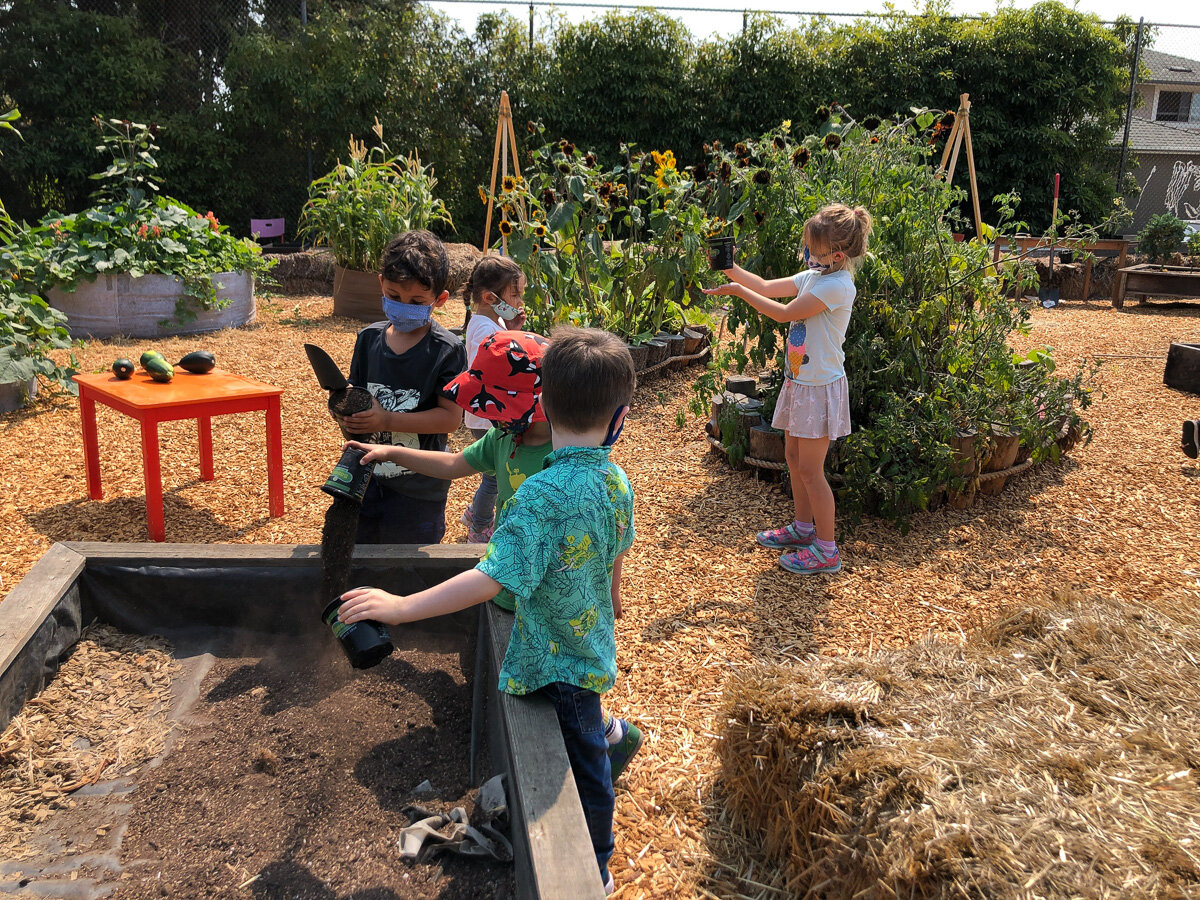
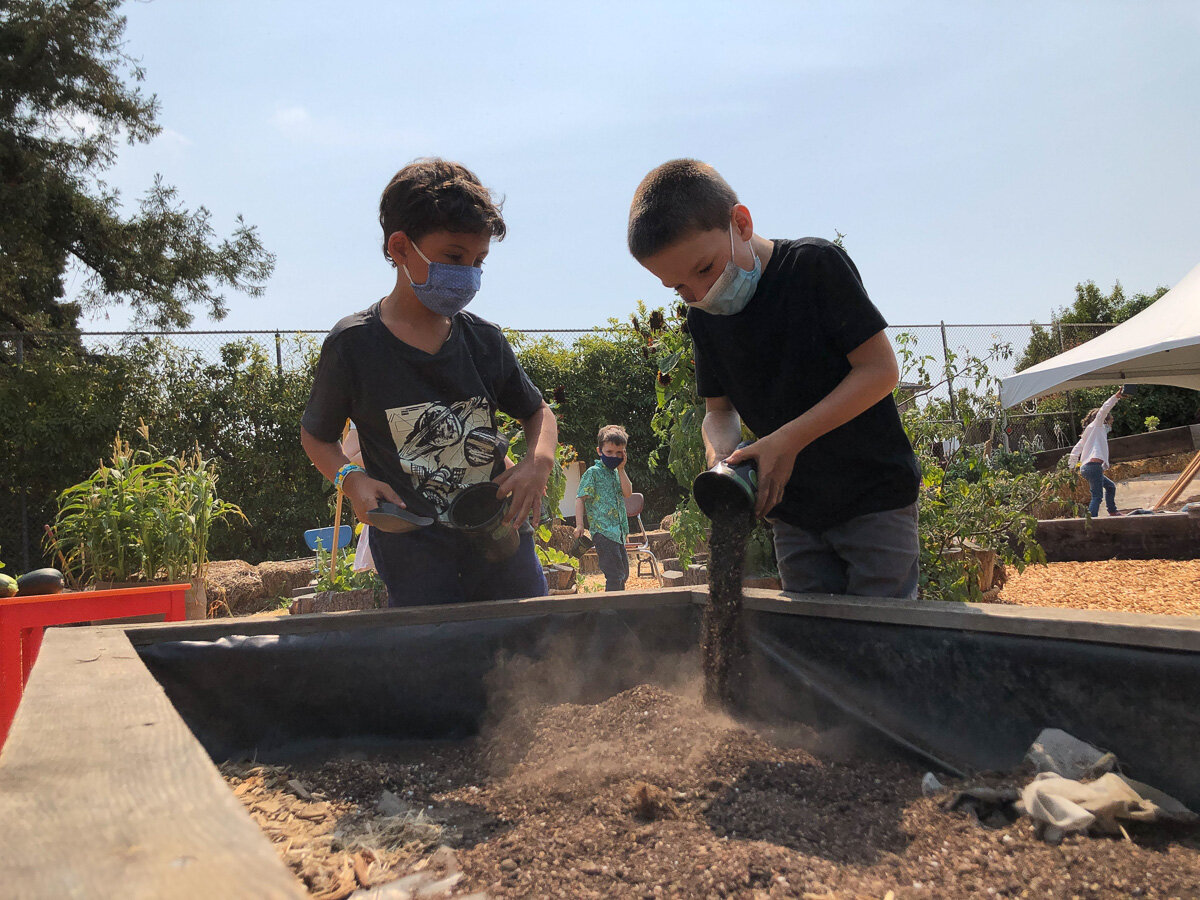
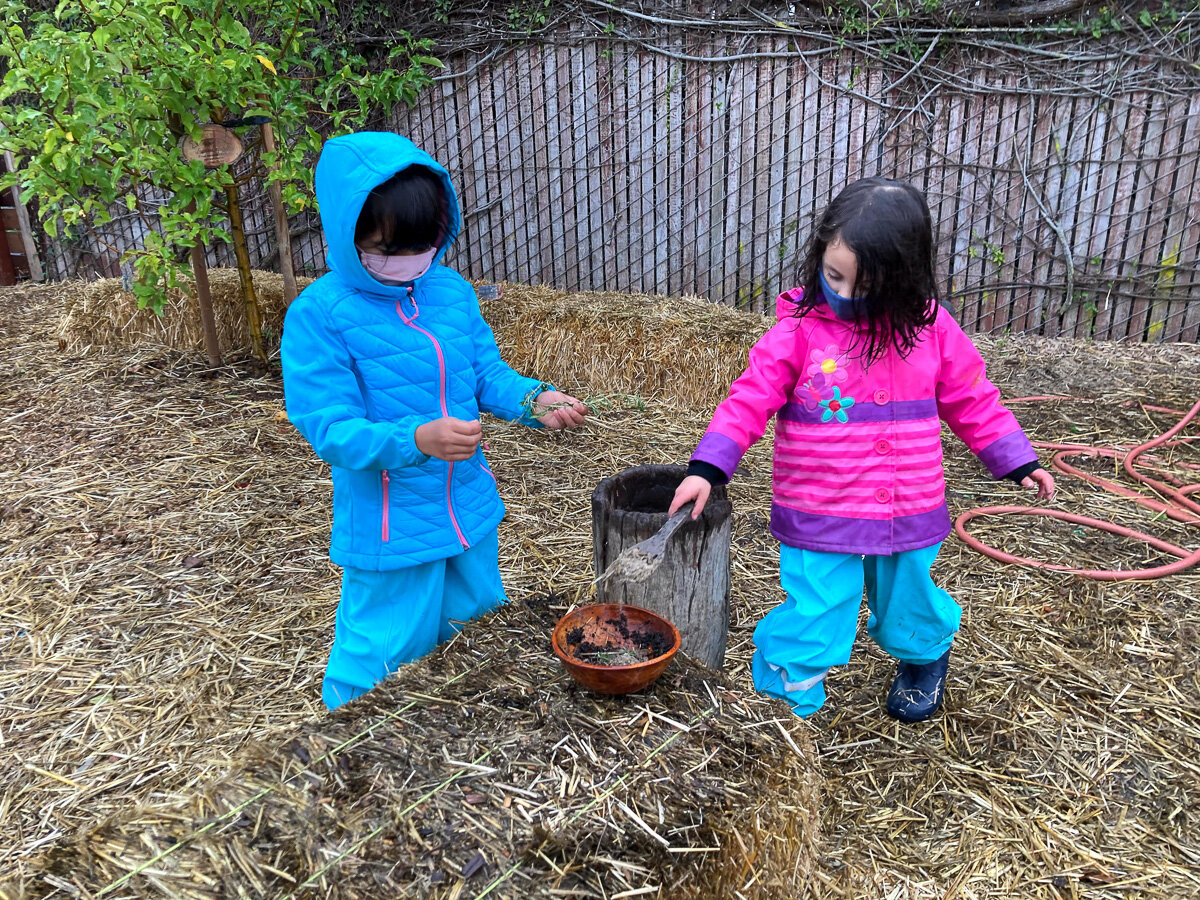
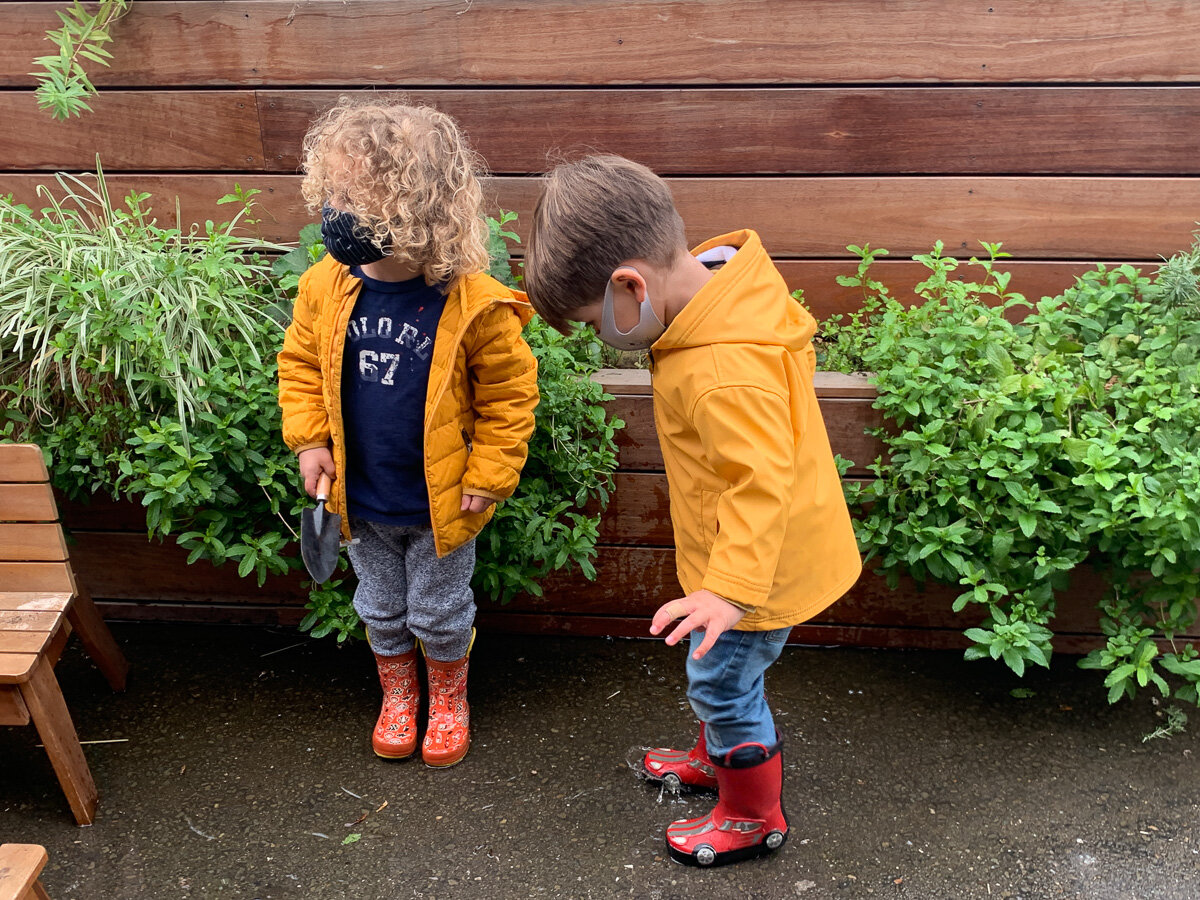
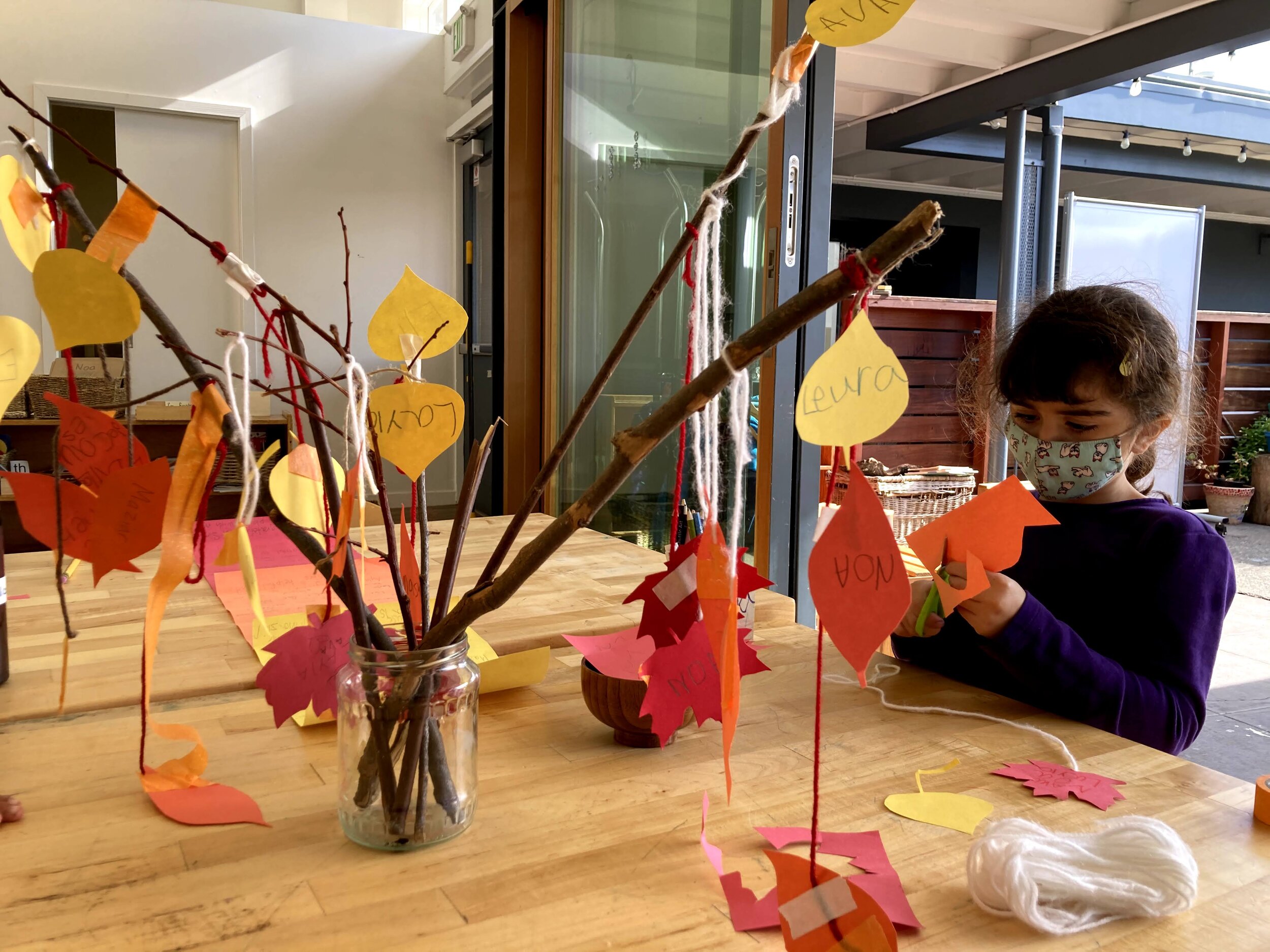
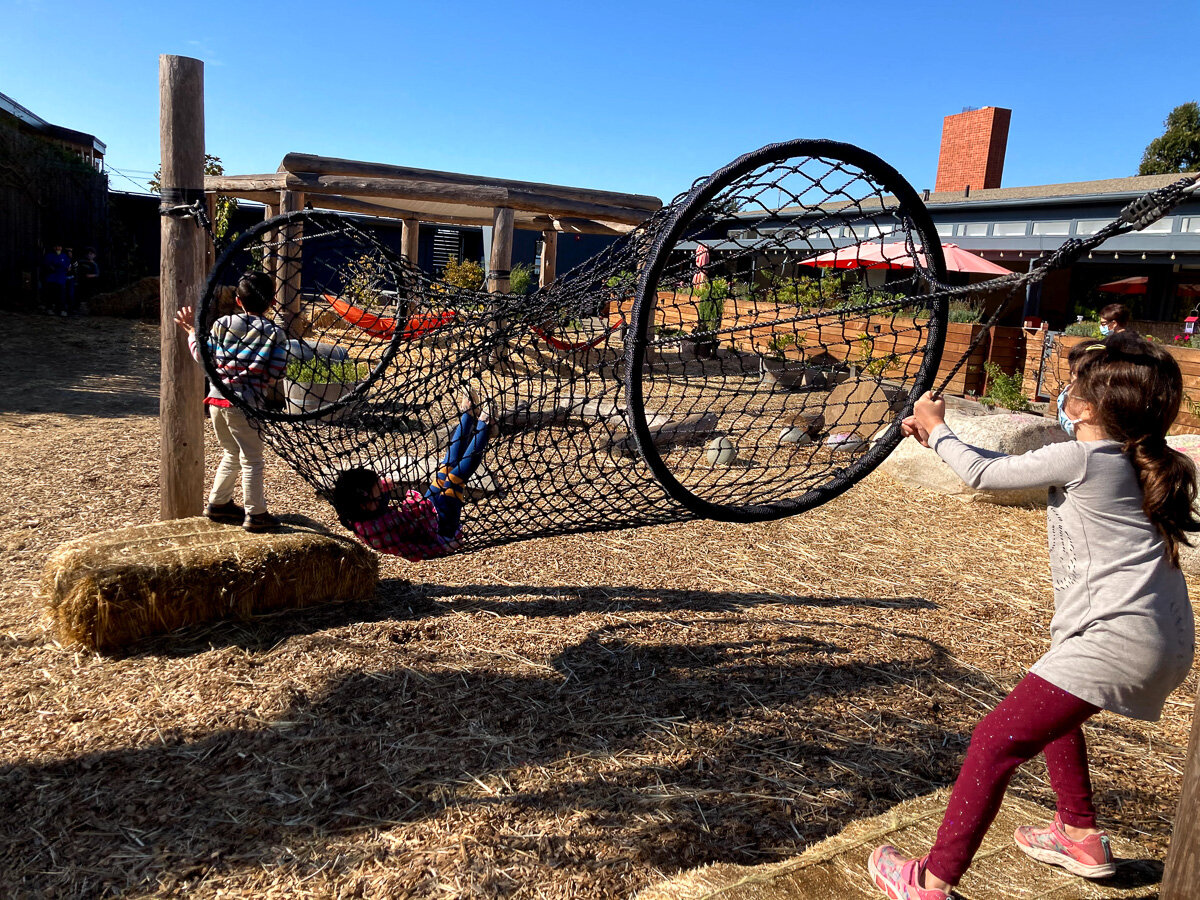
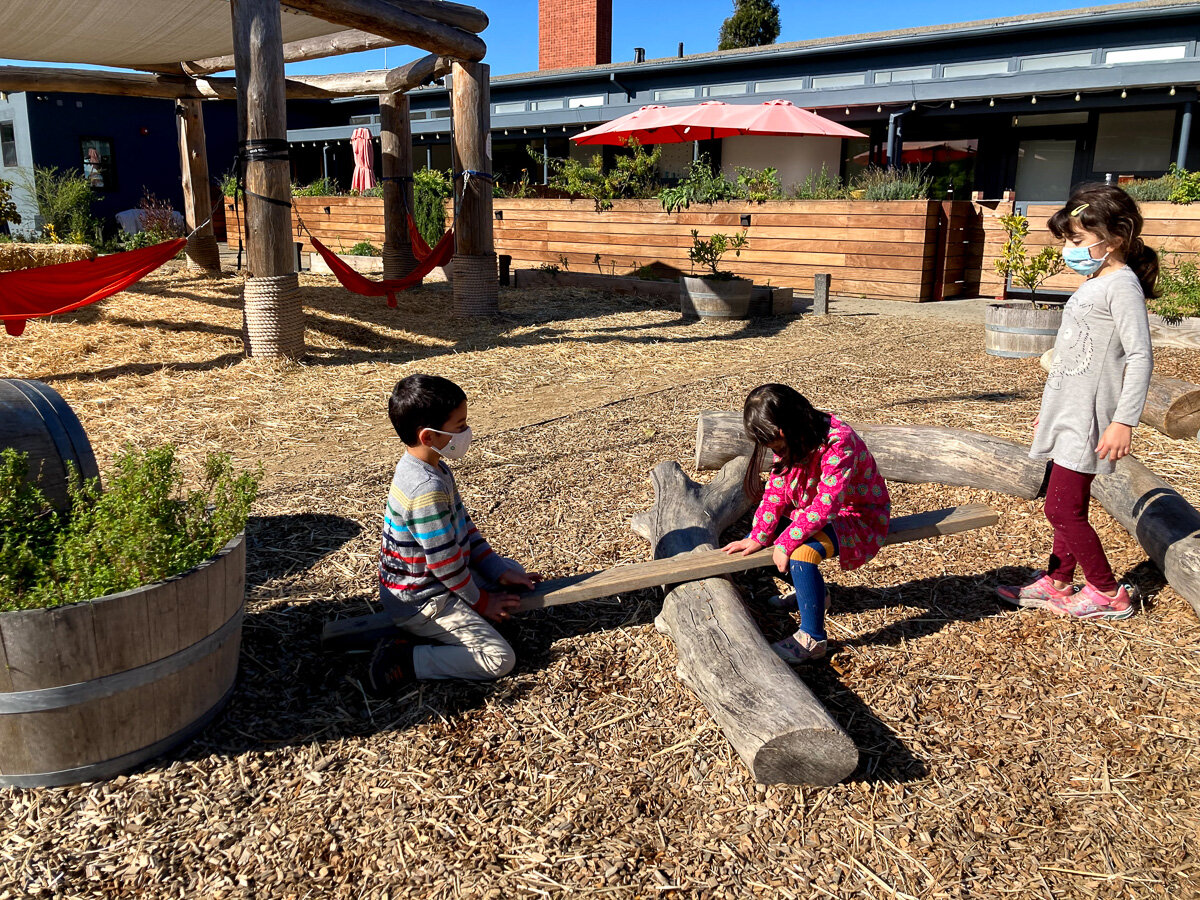
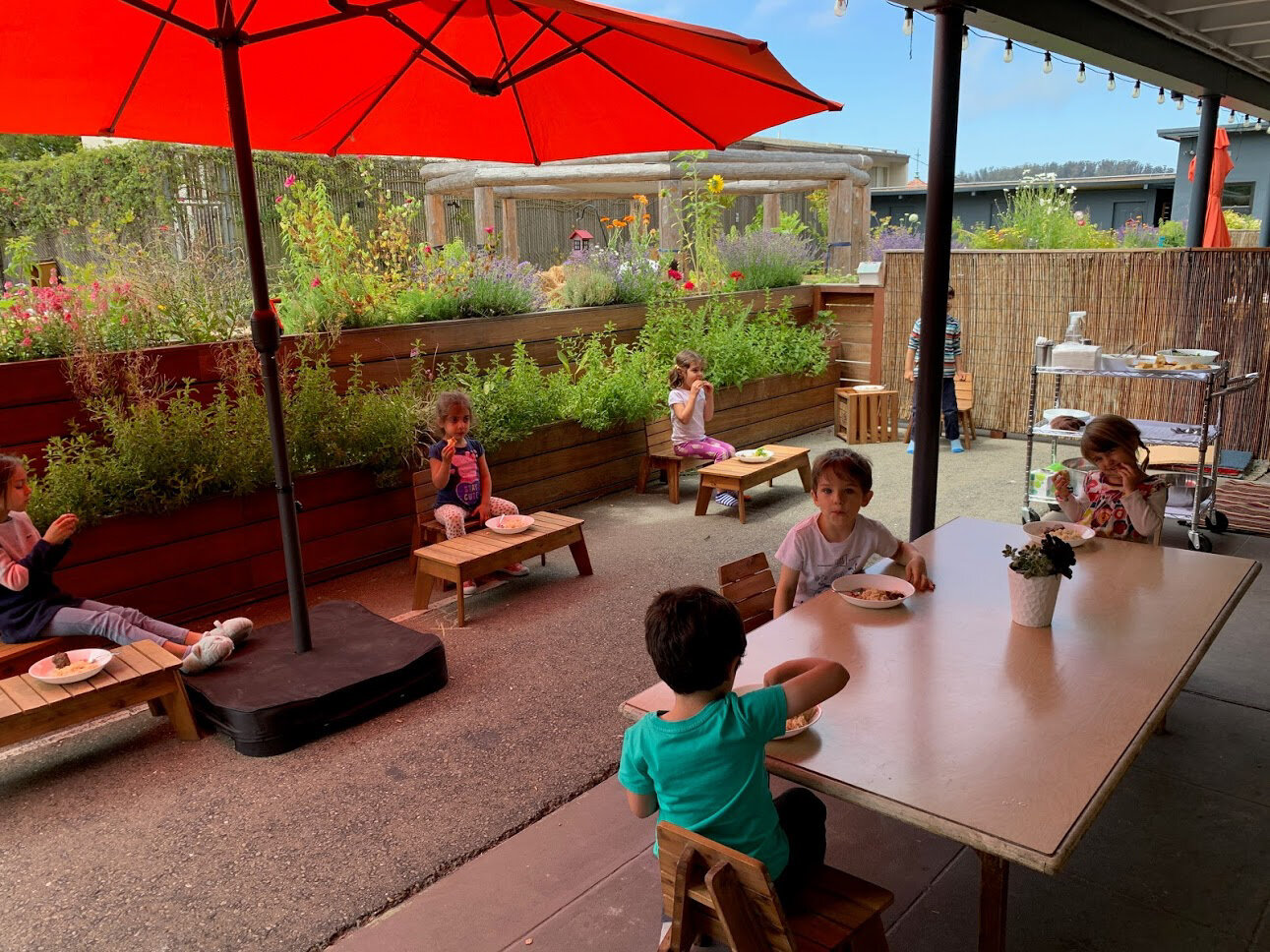
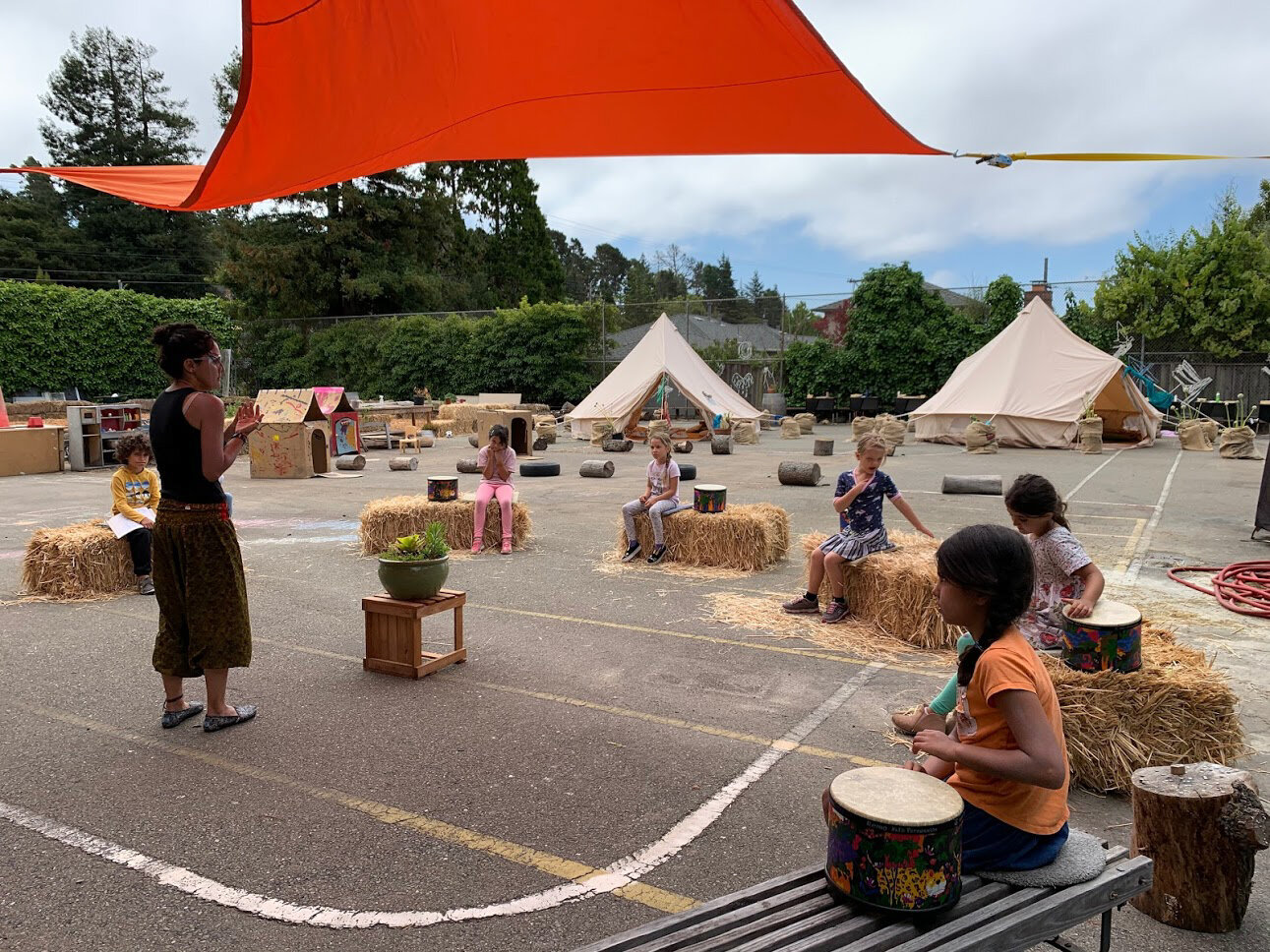

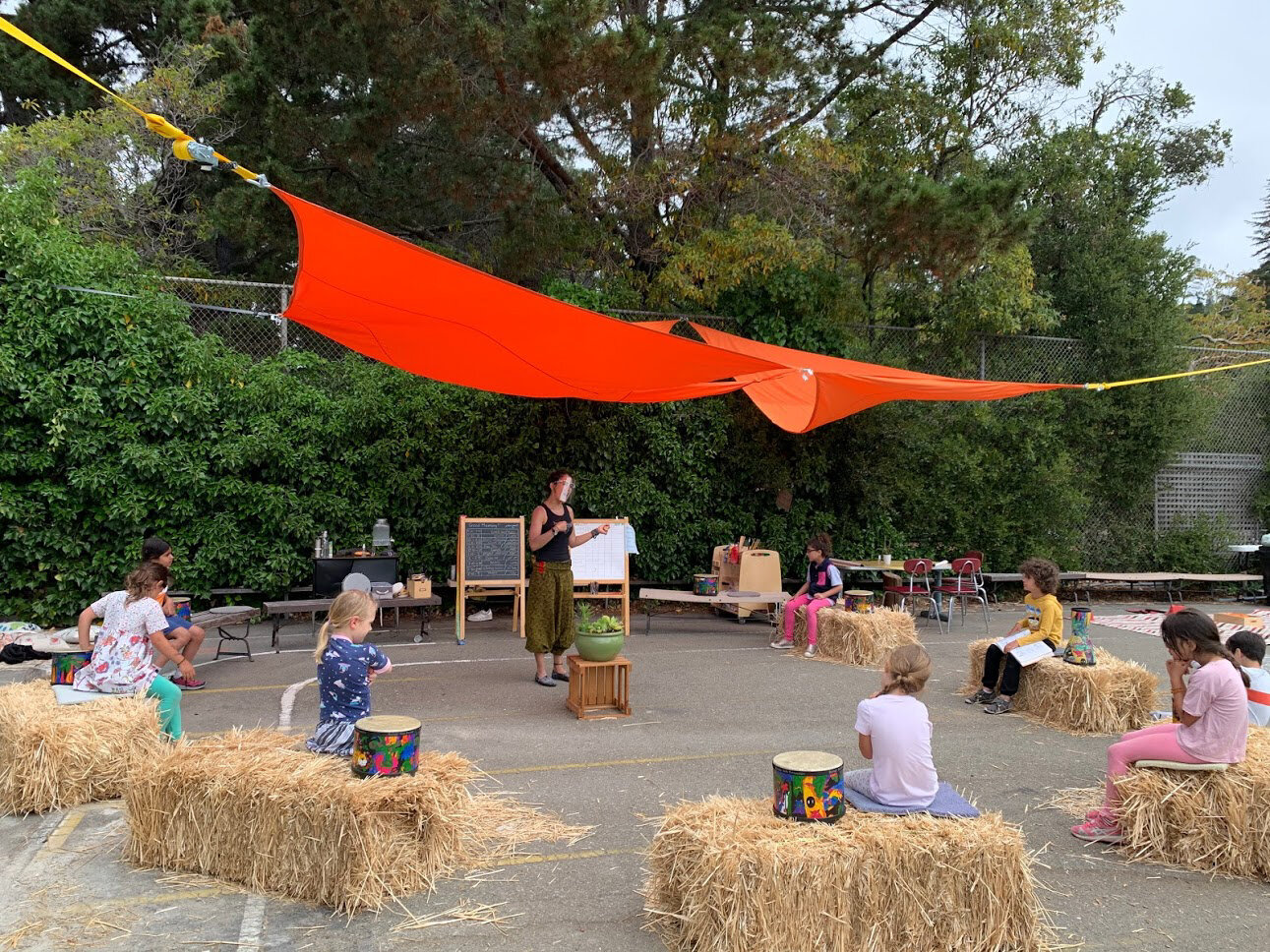
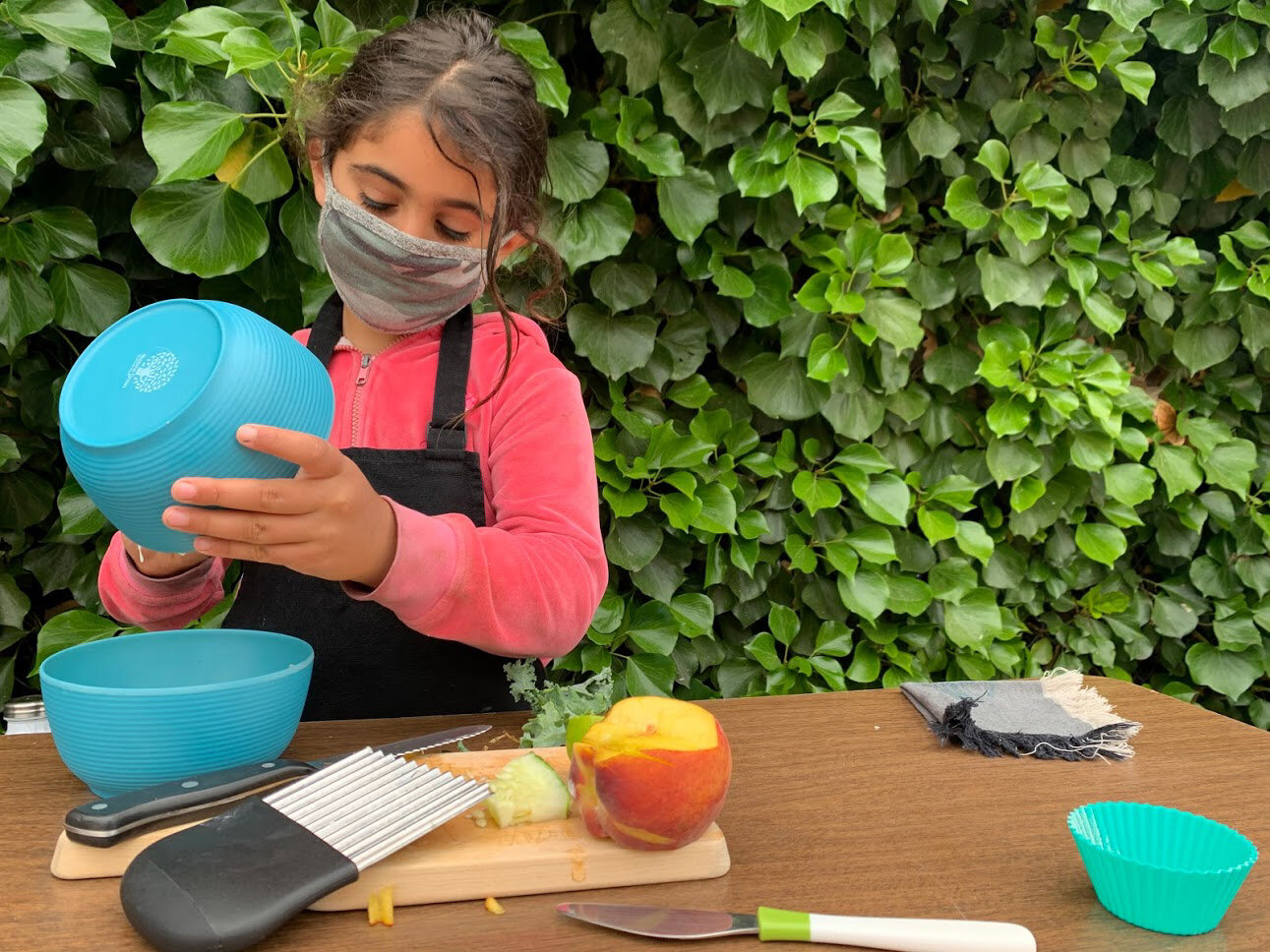
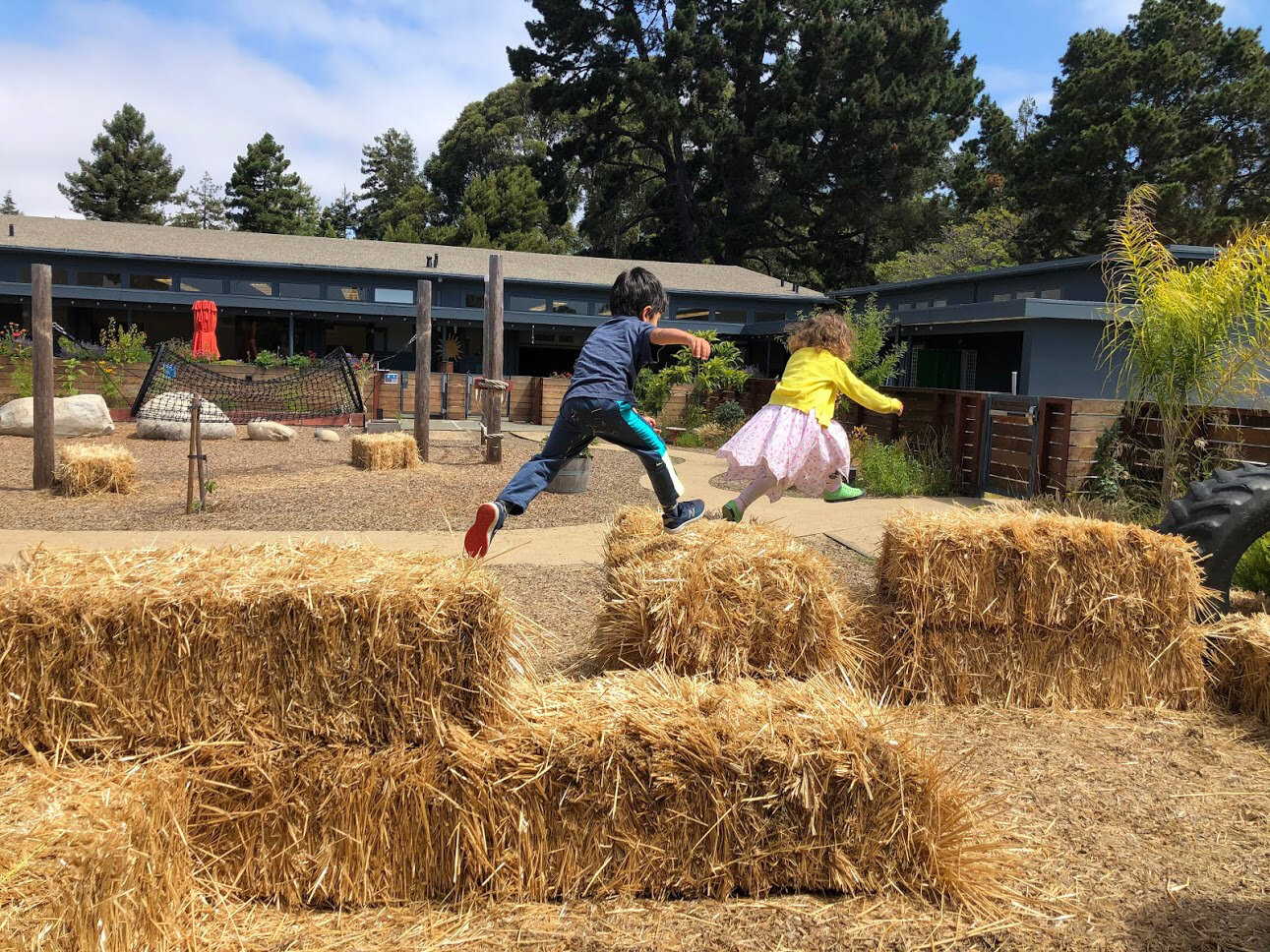
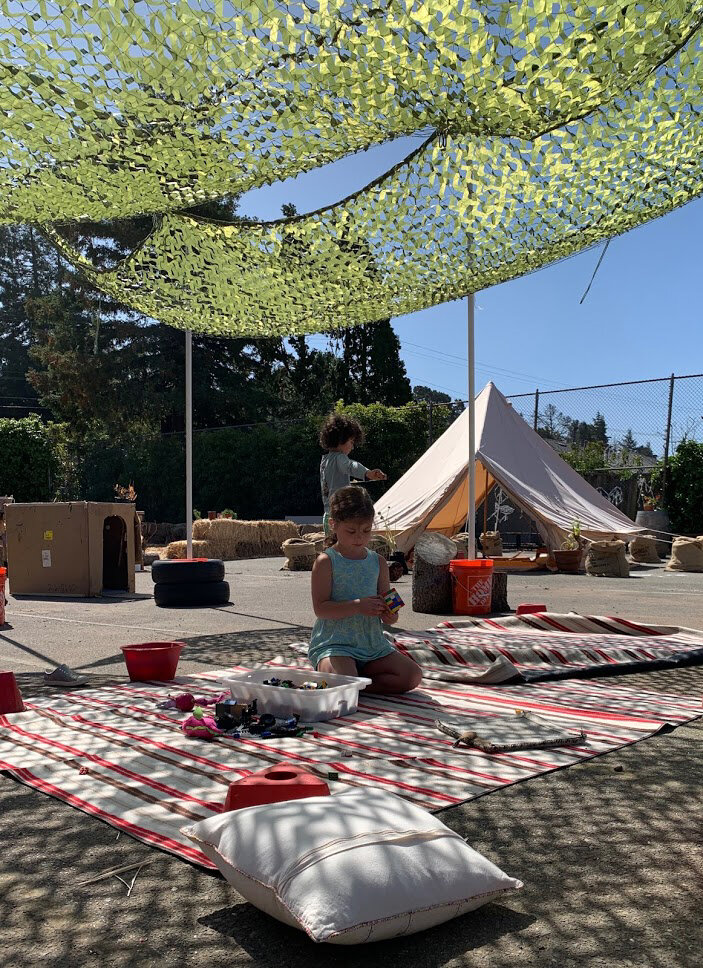
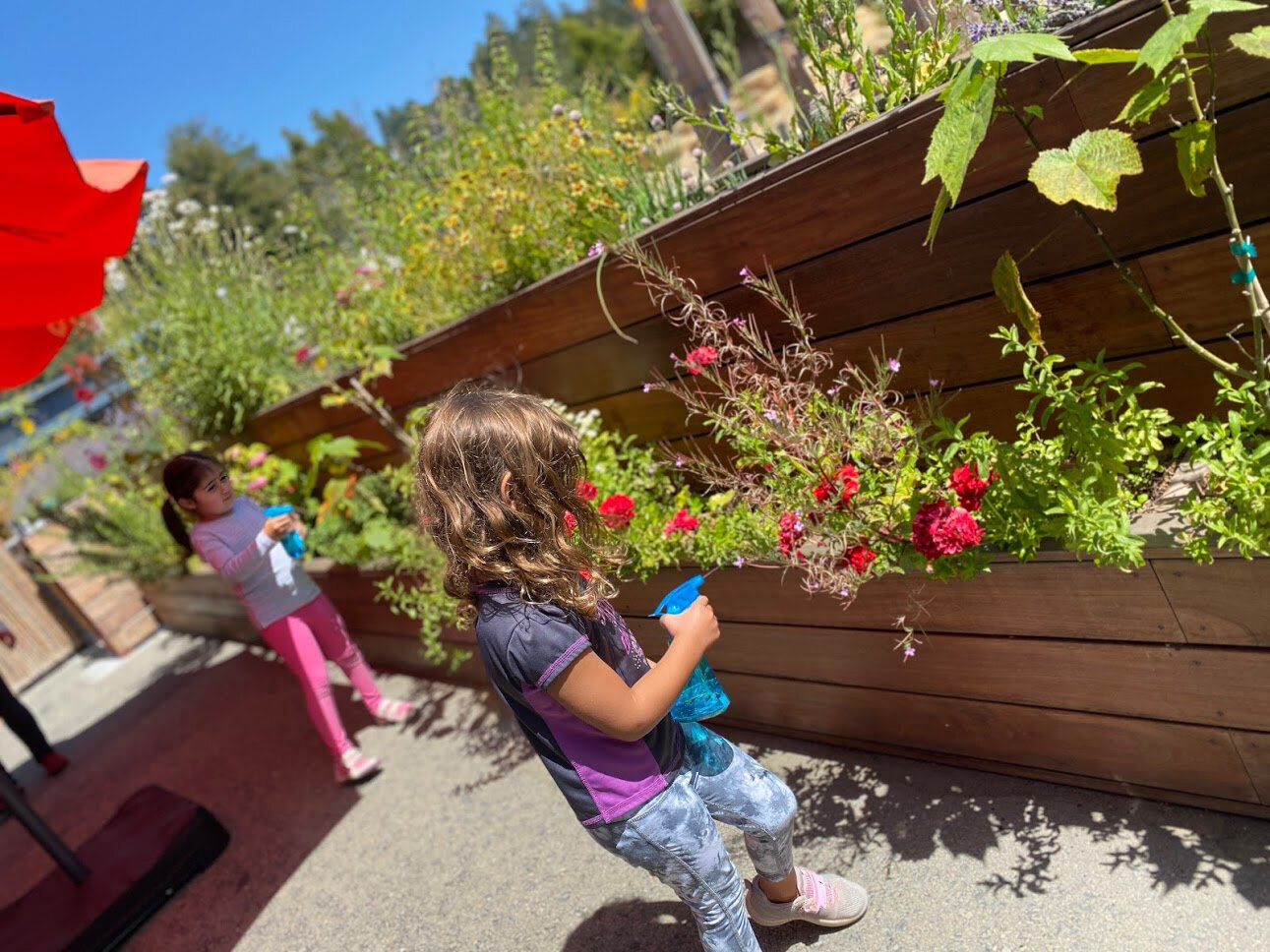

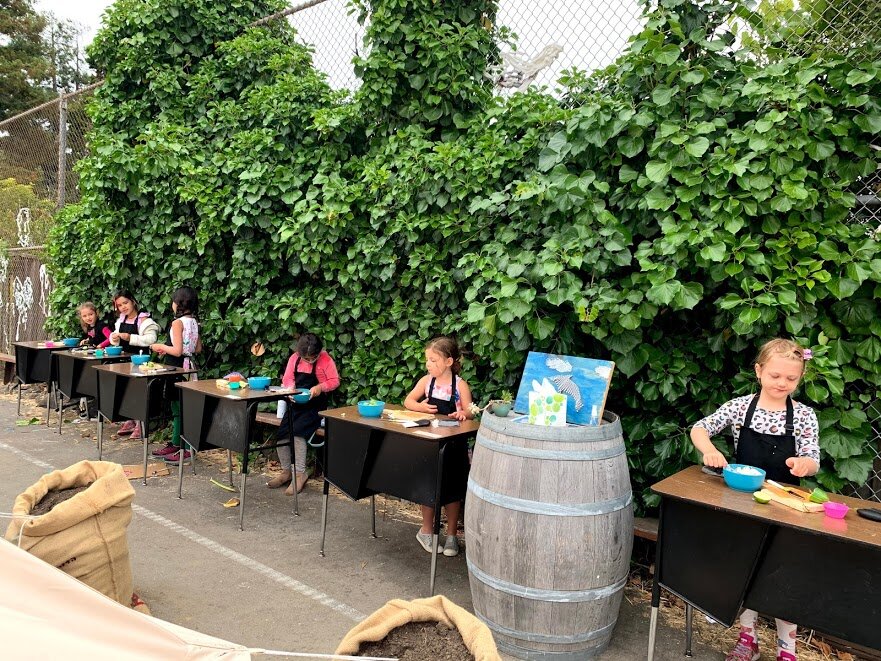
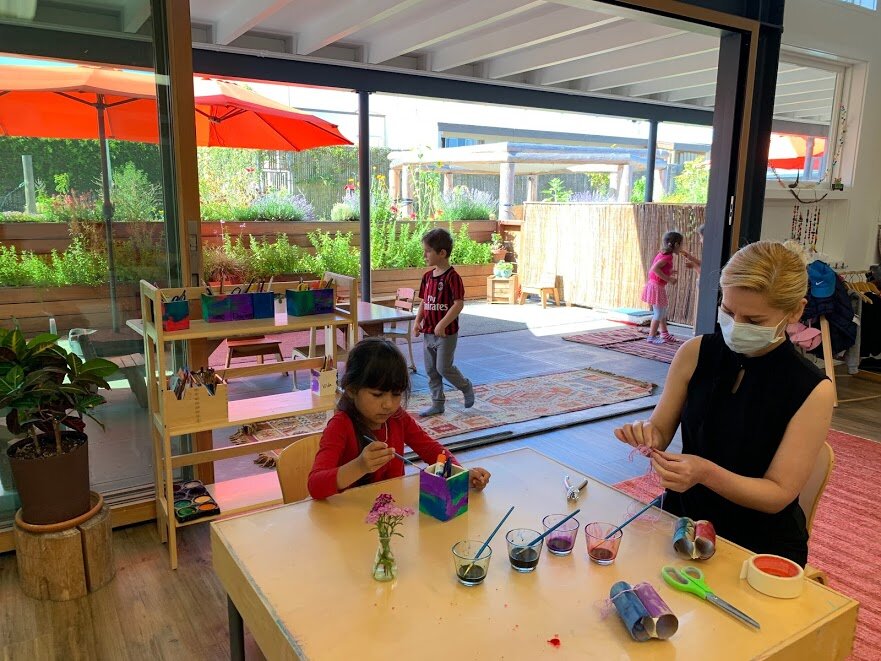
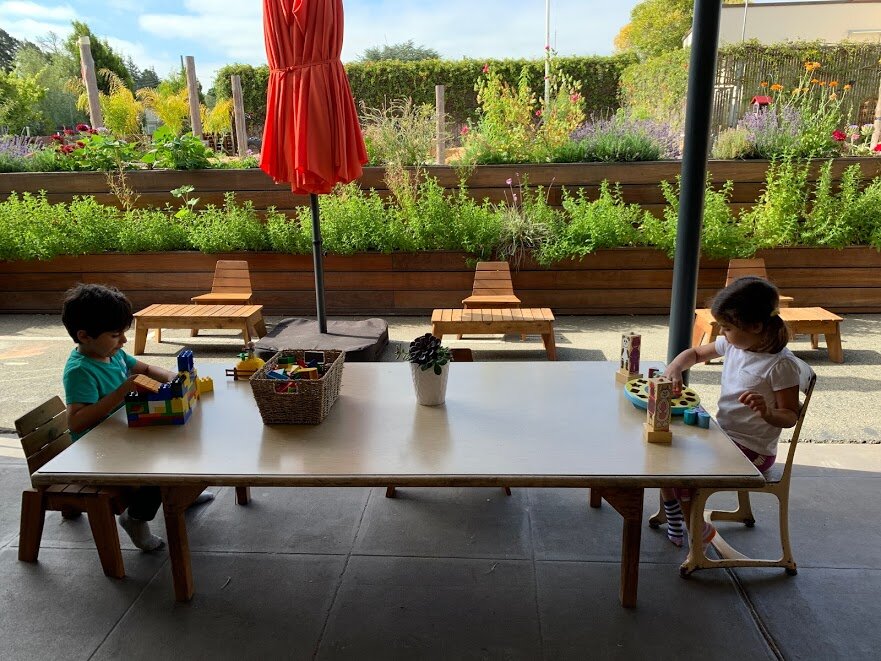
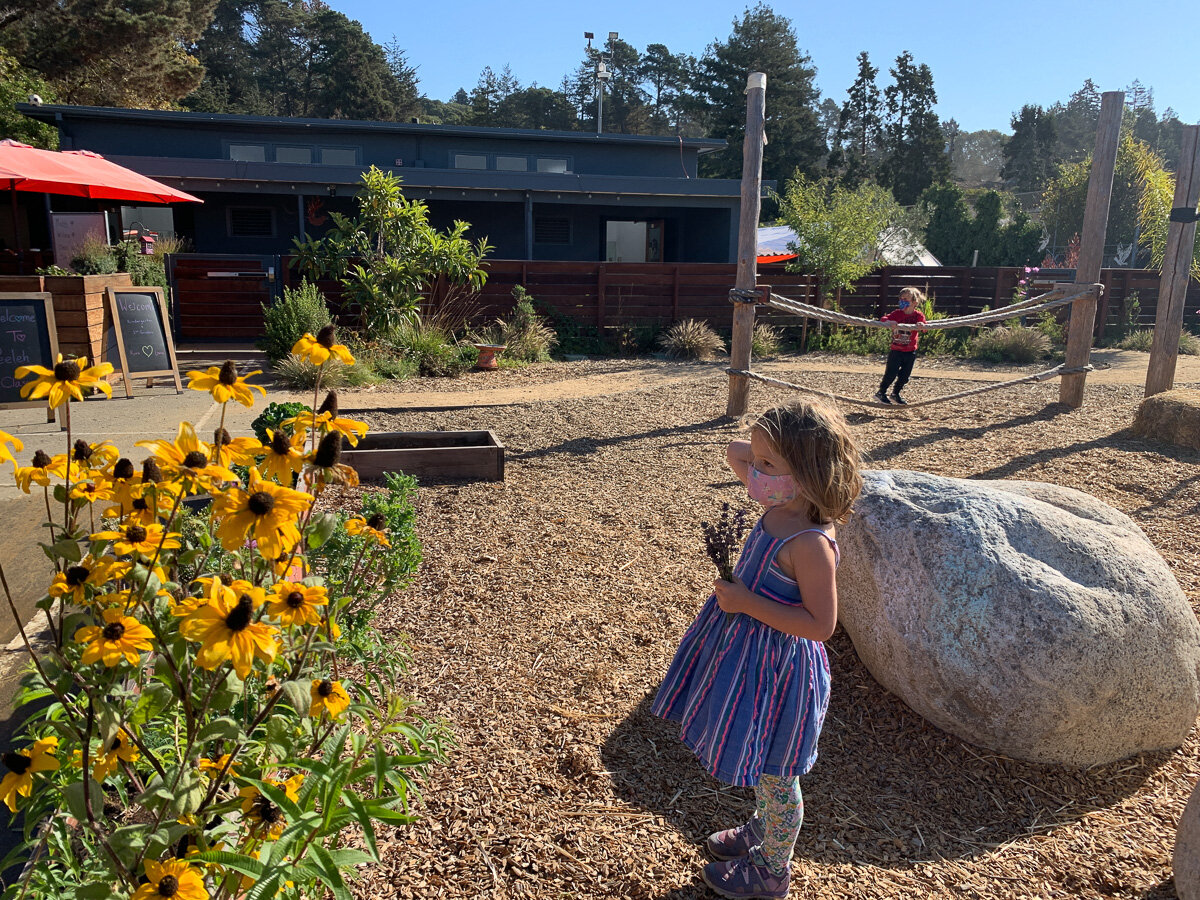
Scroll through the photo gallery above to see outdoor learning in action this summer and fall of 2020 at Golestan Education. © Golestan Education.
Community of Practice Presentation
Click on the video below to view a wonderful presentation given by Golestan Education’s Executive Director, Yalda Modabber, at the Community of Practice meeting on June 8, 2021.
Recorded webinar presentation: June 8, 2021
Resources From the School
Golestan Education — COVID-19 safety protocol
Outdoor Snack and Meals at Golestan Education
Sourcing supplies and PPE (supply list)
Credits
This article was written and compiled by Sharon Danks, MLA-MCP, Green Schoolyards America, along with contributions from Golestan Education’s Executive Director, Yalda Modabber.
A Fall 2021 update includes an interview with Modabber by Lauren McKenna, MLA, Green Schoolyards America. Nancy Striniste, MLD, Director of East Coast Programs, Green Schoolyards America.
We thank Golestan Education — especially Modabber — for their continued support of outdoor learning and willingness to share their successes with others.
National COVID-19 Outdoor Learning Initiative
The National COVID-19 Outdoor Learning Initiative supports schools and districts around the country in their efforts to reopen safely and equitably using outdoor spaces as strategic, cost-effective tools to increase physical distancing capacity onsite and provide access to abundant fresh air. The Initiative seeks to equitably improve learning, mental and physical health, and happiness for children and adults using an affordable, time-tested outdoor approach to keeping schools open during a pandemic.



